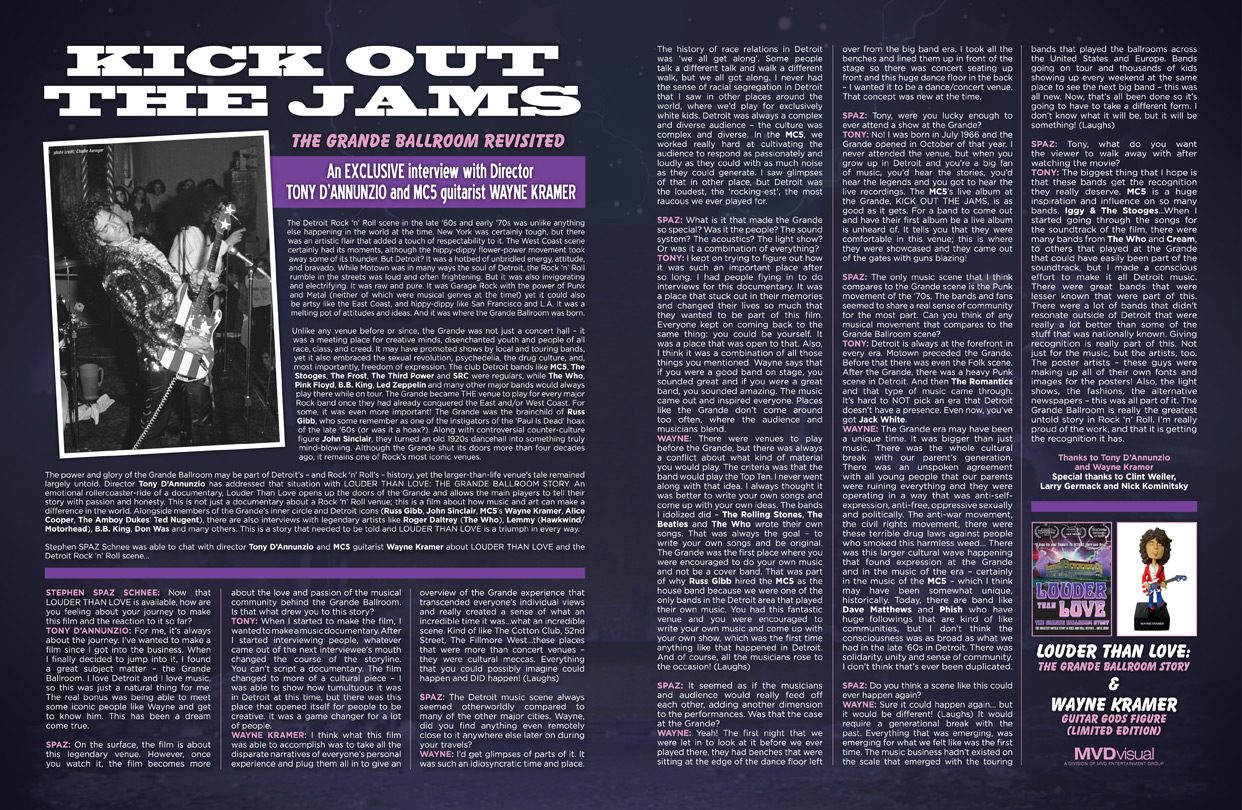The Detroit Rock ‘n’ Roll scene in the late ‘60s and early ‘70s was unlike anything else happening in the world at the time. New York was certainly tough, but there was an artistic flair that added a touch of respectability to it. The West Coast scene certainly had its moments, although the hippy-dippy flower-power movement took away some of its thunder. But Detroit? It was a hotbed of unbridled energy, attitude, and bravado. While Motown was in many ways the soul of Detroit, the Rock ‘n’ Roll rumble in the streets was loud and often frightening. But it was also invigorating and electrifying. It was raw and pure. It was Garage Rock with the power of Punk and Metal (neither of which were musical genres at the time!) yet it could also be artsy like the East Coast, and hippy-dippy like San Francisco and L.A. It was a melting pot of attitudes and ideas. And it was where the Grande Ballroom was born.
Unlike any venue before or since, the Grande was not just a concert hall – it was a meeting place for creative minds, disenchanted youth and people of all race, class, and creed. It may have promoted shows by local and touring bands, yet it also embraced the sexual revolution, psychedelia, the drug culture, and, most importantly, freedom of expression. The club Detroit bands like MC5, The Stooges, The Frost, The Third Power and SRC were regulars, while The Who, Pink Floyd, B.B. King, Led Zeppelin and many other major bands would always play there while on tour. The Grande became THE venue to play for every major Rock band once they had already conquered the East and/or West Coast. For some, it was even more important! The Grande was the brainchild of Russ Gibb, who some remember as one of the instigators of the ‘Paul Is Dead’ hoax of the late ‘60s (or was it a hoax?). Along with controversial counter-culture figure John Sinclair, they turned an old 1920s dancehall into something truly mind-blowing. Although the Grande shut its doors more than four decades ago, it remains one of Rock’s most iconic venues.
The power and glory of the Grande Ballroom may be part of Detroit’s – and Rock ‘n’ Roll’s – history, yet the larger-than-life venue’s tale remained largely untold. Director Tony D’Annunzio has addressed that situation with Louder Than Love: The Grande Ballroom Story. An emotional rollercoaster-ride of a documentary, Louder Than Love opens up the doors of the Grande and allows the main players to tell their story with passion and honesty. This is not just a documentary about a Rock ‘n’ Roll venue; this is a film about how music and art can make a difference in the world. Alongside members of the Grande’s inner circle and Detroit icons (Russ Gibb, John Sinclair, MC5’s Wayne Kramer, Alice Cooper, The Amboy Dukes’ Ted Nugent), there are also interviews with legendary artists like Roger Daltrey (The Who), Lemmy (Hawkwind/Motorhead), B.B. King, Don Was and many others. This is a story that needed to be told and Louder Than Love is a triumph in every way.
Stephen SPAZ Schnee was able to chat with director Tony D’Annunzio and MC5 guitarist Wayne Kramer about Louder Than Love and the Detroit Rock ‘n’ Roll scene…
